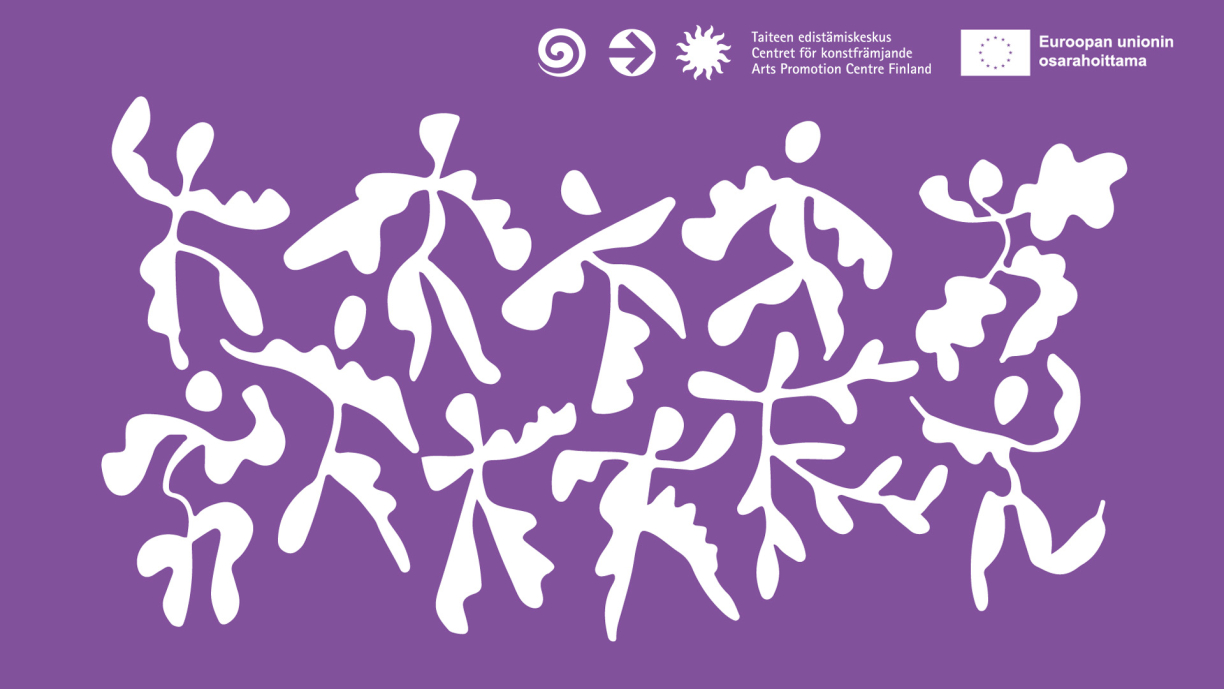First ESF+ funding round concluded in 2023 – what next?


The first call for applications was held from March to May 2023. A satisfyingly large number of experts representing a broad range of fields in the creative industries responded to the call for applications. More than 80 applications were submitted, and a total of nine projects were selected for funding last autumn.
The funding supports projects that respond to the expertise needs in the creative industries caused by changes in working life. The projects strengthen the creative economy or promote expertise in the arts, culture and creative sectors, as well as collaboration with other fields.
Universities of applied sciences performed particularly well in the first round of funding and are involved in all the selected projects. The first call for applications also attracted many smaller actors in the creative sectors, who are included in the three of the funded group projects.
Yet why did so many smaller applicants within the arts, culture and creative sectors fail to secure funding?
ESF+ is not necessarily the most familiar source of funding for experts in the creative sectors. A key aspect of ESF+ funding is that support is not granted if the application does not sufficiently meet the predefined selection criteria. This often means that the project idea must be formulated from the outset from the point of view of these various criteria, which can cause confusion at first.
The selection criteria are divided into two categories: general and objective-specific selection criteria. The project must first meet all the general selection criteria before it can proceed to the objective-specific evaluation and scoring. The scoring categories are listed in the call for applications, so it is very important to read the call for applications carefully.
The next call for applications is planned for the turn of 2024–2025. The leadership team for the theme is still outlining the details of the application round. The call for applications may therefore be more precisely targeted next time or contain restrictions that are not yet known.
What is known, however, is that the next call for applications will be more diversified than the previous one, so that even more smaller actors in the arts, culture and creative sectors can access funding.
Perspectives on success from the first funding round
How should one prepare for the next call for applications? Together with the funding authority of the theme, the ELY Centre for Häme, we went through the first call for applications and summed up the aspects that special attention should be paid to.
Nationwide scope
ESF+ projects develop solutions that respond to a need identified within the sector and that benefit the entire sector. Nationwide scope means that the people who are the target group can participate in the project’s activities widely across Finland and benefit from the project's results.
The nationwide scope of operations should be apparent already during the project phase. In other words, it is not enough that operating models are scaled up only after the project.
Nationwide scope is best achieved with group projects consisting of multiple actors. A project by a single actor, for example a micro-enterprise or individual, is rarely able to respond to a broad national development need. Networking and participating in the call for applications as part of a broad network provide better opportunities for this.
Needs orientation
Which problem will the project change when implemented? The project must start from a genuine, perceived need in the field.
The applicant must be able to demonstrate how the need has been identified, for example by means of surveys, studies or other self-collected information.
However, the need must be real and not, for example, a service previously developed by the applicant that is waiting for buyers. If the project offers services for free that previously had to be paid for, competition may be distorted.
Impact
The impact of operations is an important cross-cutting theme, from project planning to its implementation and dissemination of results. It is essential to think about who needs the information produced in the project and how the information will be shared.
In addition, it is necessary to describe how the dissemination of results and good practices will be ensured and how they will be utilised even after the end of the project. Simply publishing the results online at the end of the project is not enough.
Employment
Promoting employment means improving employment and the employment situation in the sector by means of structural innovations. The employment that improves as a result of the project should be permanent and continuous – so it is not enough that, for example, artists or cultural professionals are employed only for the duration of the project.
Expertise
The key is to identify the kind of expertise that can make employment easier, can help business operations grow in the arts, culture or the creative sectors, or can strengthen the creative economy. Is the expertise of people in the field best developed by means of training, collaborating or acquiring information?
Relationship of development activities to basic operations
ESF+ funding is intended for development activities and is not awarded for basic operations.
At the same time, project activities should not prevent the continuation of basic operations. If all employees begin to work on the project, how can basic operations be continued during the project period?
Funding requirements
ESF+ funding is post-funded, meaning that it is paid only afterwards, for example three times a year according to how much has been spent. Therefore, the cash flow from basic operations is helpful for running the project.
The funding authority reviews the financial information of organisations to see if the applicant will be able to support the post-funded project. For example, an unpaid tax liability can be an obstacle to obtaining funding.
Shared project expertise from group projects
The projects selected after the first funding round revealed the advantage of higher education institutions in terms of project expertise. ESF+ is a familiar financial instrument for higher education institutions, and they also have a good perspective on the field, experience in development work, and feasible ideas to support the growth of the creative industries and diversify the economic structure.
In the first call for applications, universities of applied sciences applied for funding mainly among themselves, as did actors in the arts, culture and creative sectors. Many actors in the creative industries also applied for funding alone. Three of the funded projects comprise both universities of applied sciences and smaller actors in the creative industries.
For many smaller actors, it can be useful to participate in a group project with a more experienced project actor. In this way, the more experienced actor can guide the project planning process if necessary. In the next call for applications, applicants will be encouraged to collaborate more widely than before.
Collaboration increases the kinds of opportunities that the applicant may not be able to implement alone. It is important to consider who, for example, will continue to organise training that strengthens expertise or promotes employment after the end of the project if no training organisation is involved.
In group projects, it is of primary importance that all applicants understand the entirety of what they are creating together. This requires smooth collaboration among group implementers and practices that enable the exchange and sharing of information. All applications by group members must be identical, except for the sections on the budget and own areas of responsibility.
Support for finding partners
The Creative Net team will be organising events in 2024 to help creative industry experts find new partners and co-develop project ideas. Our LinkedIn group can also be used as a channel for searching for project partners.
Our “From idea to project” workshops will also continue at creative industry events, and we can also be invited to participate in events. At the start of the year, we will be launching our “From idea to project” cards to support project planning, and we will continue to publish useful information and materials for the next call for applications on our website.
As soon as we are informed about the focus and criteria for the next round of funding, we will begin offering sparring for new project ideas, as well as for those that participated in the first call for applications but did not receive sufficient points.
We will also share information about the nine projects that are now beginning and the training, networking and event opportunities they offer to actors in the creative industries. In this way, even smaller actors will be able to utilise the results of these projects as a target group.
Various surprises are also planned for the coming year, so stay tuned!


